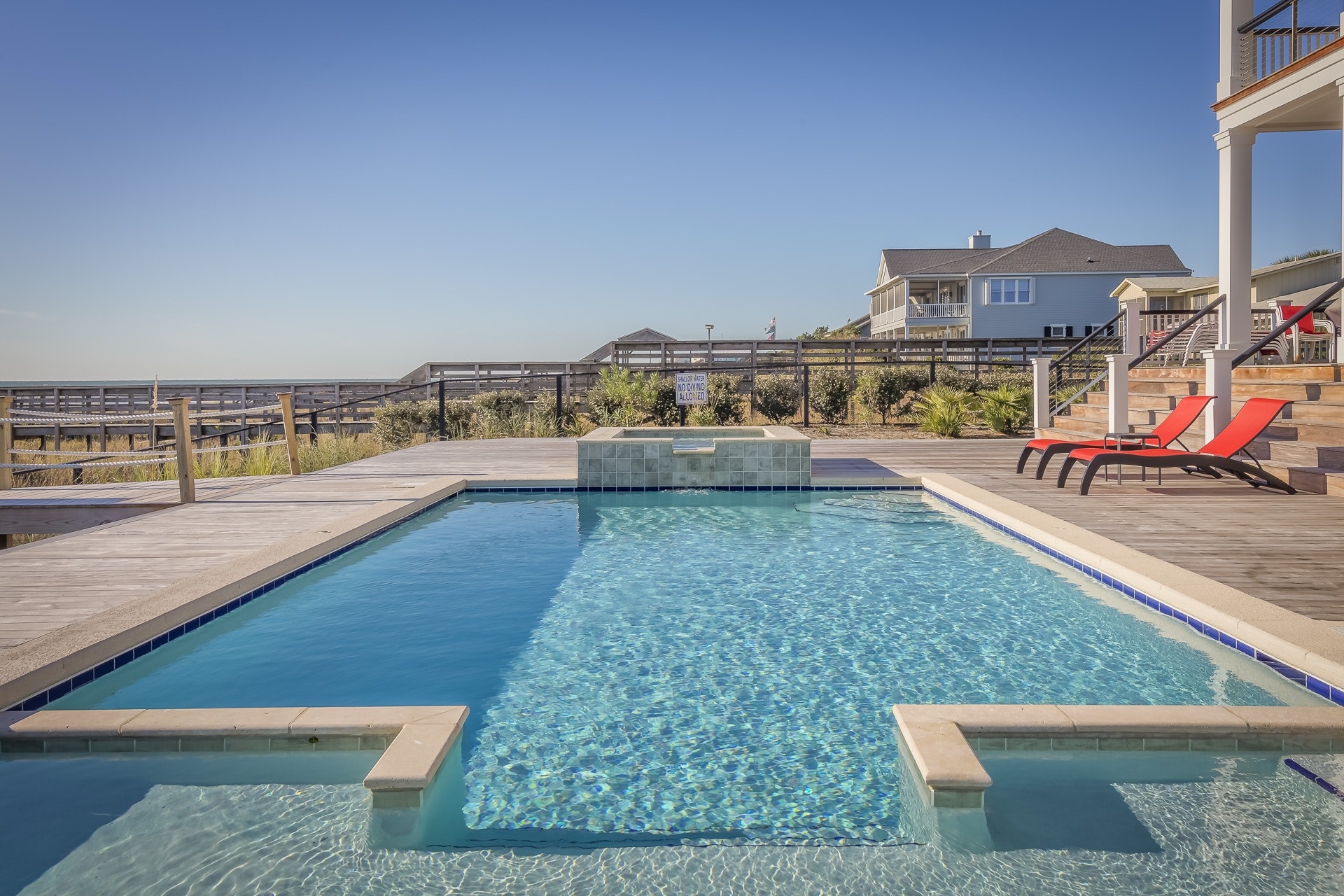The swimming pool regulations and fencing requirements are in place to ensure the safety of young children and to prevent accidents from happening (e.g. drowning, slips, and falls due to unsupervised access to the pool).
When planning and designing your outdoor space with a pool, it is crucial to know the relevant building codes. The regulations vary in every state and council. Contact your local council to know more about these, or work with a local professional designer who understands the rule in your location.
For reference, read this short and sweet compilation:
General swimming pool and fencing regulations in Australia
Take note of these before construction. Make sure your plans comply with these general guidelines:
- Secure the pool area with a fence at least 1.2 metres high.
- The boundary fence near the pool must be at least 1.8 metres high.
- There should be no way to climb the wall or fence to access the pool.
- There should be no tree or other structure that allows kids to enter the pool area.
- Keep a 100-millimetre gap between the ground and the fence. The space between each fence post must be this little as well.
- Install a self-closing gate.
- Keep the latches out of the reach of children.
- Pools of all shapes and sizes must have a child-proof safety barrier.
Families who rent a home that doesn’t comply with these rules should ask the owner of the property to abide by these regulations.
Now, let’s take a look at the regulations in each state.
New South Wales
In NSW areas, the safety barrier around the pool is the most crucial safety feature. The fence must be child-proof so that no kid can get into the pool without supervision. Lock all access when the area is not in use.
All pools, whether residential or commercial property, must be inspected by the local council to ensure compliance with the regulations. A compliance certificate will be issued to the owners when they pass the inspection.
Queensland
Similar to NSW, installing a child-proof barrier around the pool is a priority in QLD. It must be at least 1.2 metres high and must have no space where small children can get through.
In case the fence is within 1.5 metres from the boundary, the barrier must be at least 2.0 metres above ground level. Fences on a retaining wall must be at least 2.0 metres high as well.
Make sure the gate is self-closing and the lock/latch is out of reach of small children.
If the swimming pool is damaged, repair it immediately.
A compliance inspector inspects all pools in QLD. The inspector will advise the property owner to rectify any problem he/she sees immediately (if there’s any). The inspector will also issue a compliance certificate in case the pool passes the inspection.
Victoria
As in QLD and NSW, homeowners must install a child-proof, self-latching fence around the pool. The pool must be inaccessible to small children without adult supervision. It must be at least 1.2 metres high and must not have a foothold for children.
Even inflatable and above-ground pools with a depth of 300 millimetres (less than 1ft.) must have a fence around them. The fence must be compliant with the regulations. If the pool is less than 300 millimetres deep, it doesn’t require fencing. Covering the pool will be enough.
If you’re renting a property, it is the owner’s responsibility to build a fence around the pool. If you bought the house, it is your responsibility to renovate it as the new homeowner.
South Australia
Fencing regulations in SA are strict. The penalties can go as high as $15,000. To ensure compliance, notify the local council before building the pool.
First, you need to build a permanent fence around the pool. There must be no way for toddlers to access the pool — no foothold, handhold, or space underneath where they can crawl.
Following the general swimming pool and fencing regulations in the country, the pool fence must be at least 1.2 metres high, and boundary fences must be at least 1.8 metres high. The gates of the barriers must be self-closing. The locks and latches must be inaccessible to small children.
Western Australia
Regulations in WA are similar to those in other states. All pools deeper than 300 millimetres must have a child-proof fence with self-closing doors and safety locks.
Tasmania
Homeowners in Tasmania follow the general swimming pool and fencing requirements in the country.
Pool fences must be at least 1.2 metres high, self-closing, and child-proof.
Gaps between the fence and the ground must not be bigger than 100mm to prevent kids from crawling in and out of the pool area.
If the pool has vertical bars, make sure that the space between each bar is less than 100mm as well.
Australian National Territory
Homeowners in the ACT need to obtain building approval before building a pool to make sure all projects follow the building code of Australia. The same rules apply: the swimming pool must have a secure barrier, self-closing doors, child-proof latch/lock, and be inaccessible by children without adult supervision.
Homeowners do not need to get building approval if they’re building shallow pools with a depth of 300mm below.
Northern Territory
In the Northern Territory, regulations are firm. Children under five years old shouldn’t play around the pool without adult supervision. Homeowners must install a child-proof fence to ensure safety. Make sure that there is no other way to access the pool area (e.g. climbing property boundary fence/wall, climbing trees, foothold, handhold, or space underneath where children can crawl).
Properties in the Northern Territory are vast and might have multiple pools. If you have a jacuzzi, hot tub, or spa beside the pool, make sure it has a lid that can be locked.
Are you planning to renovate your outdoor space and build a pool this month? If you need help, contact us.

